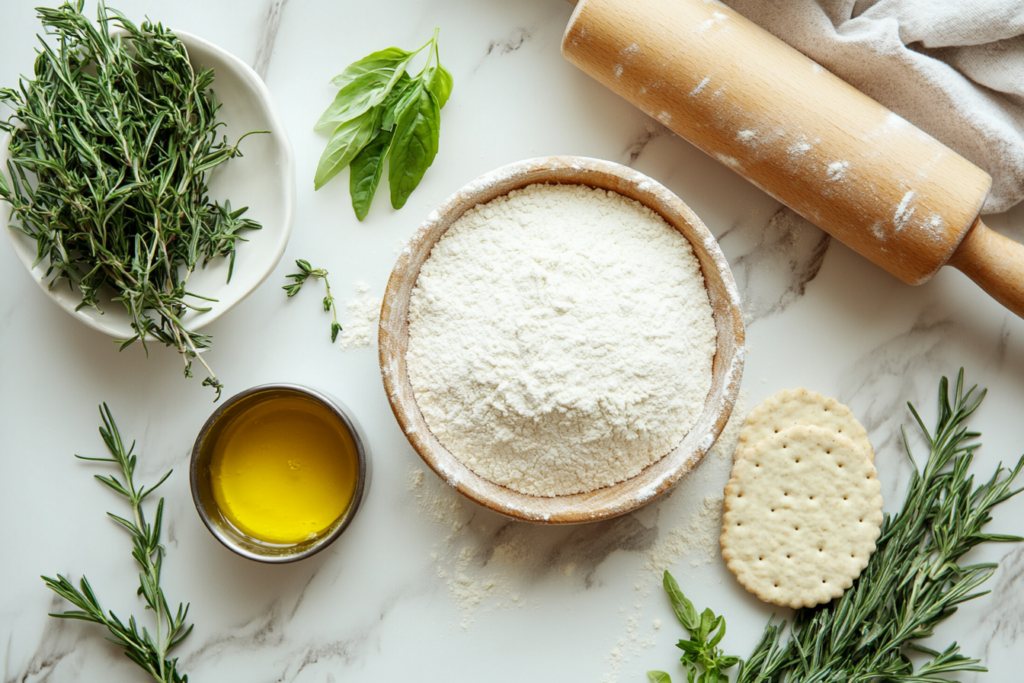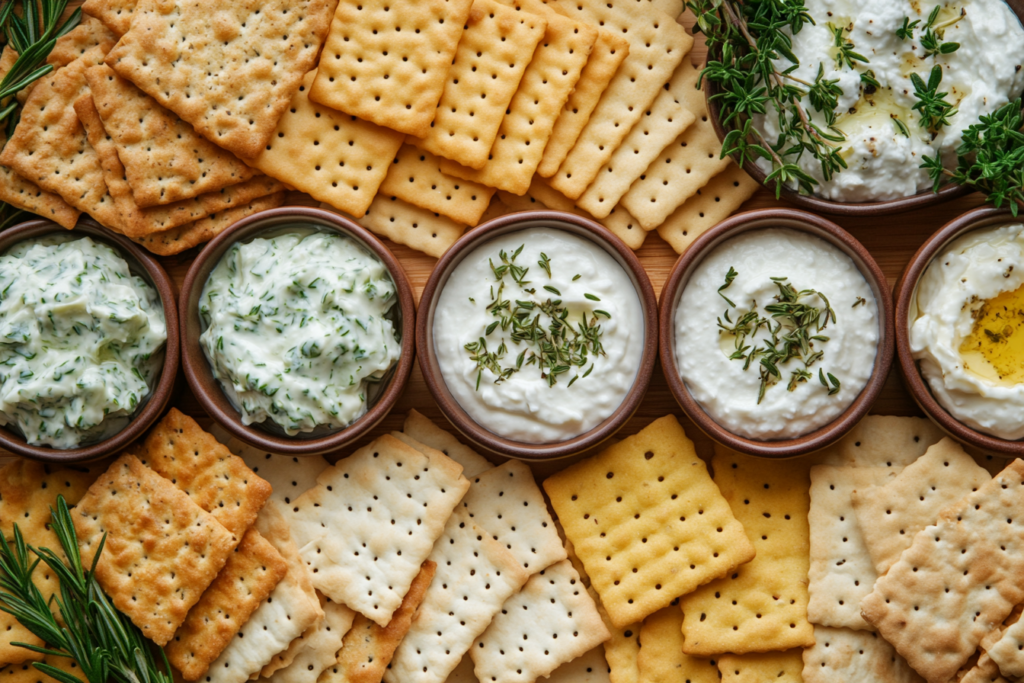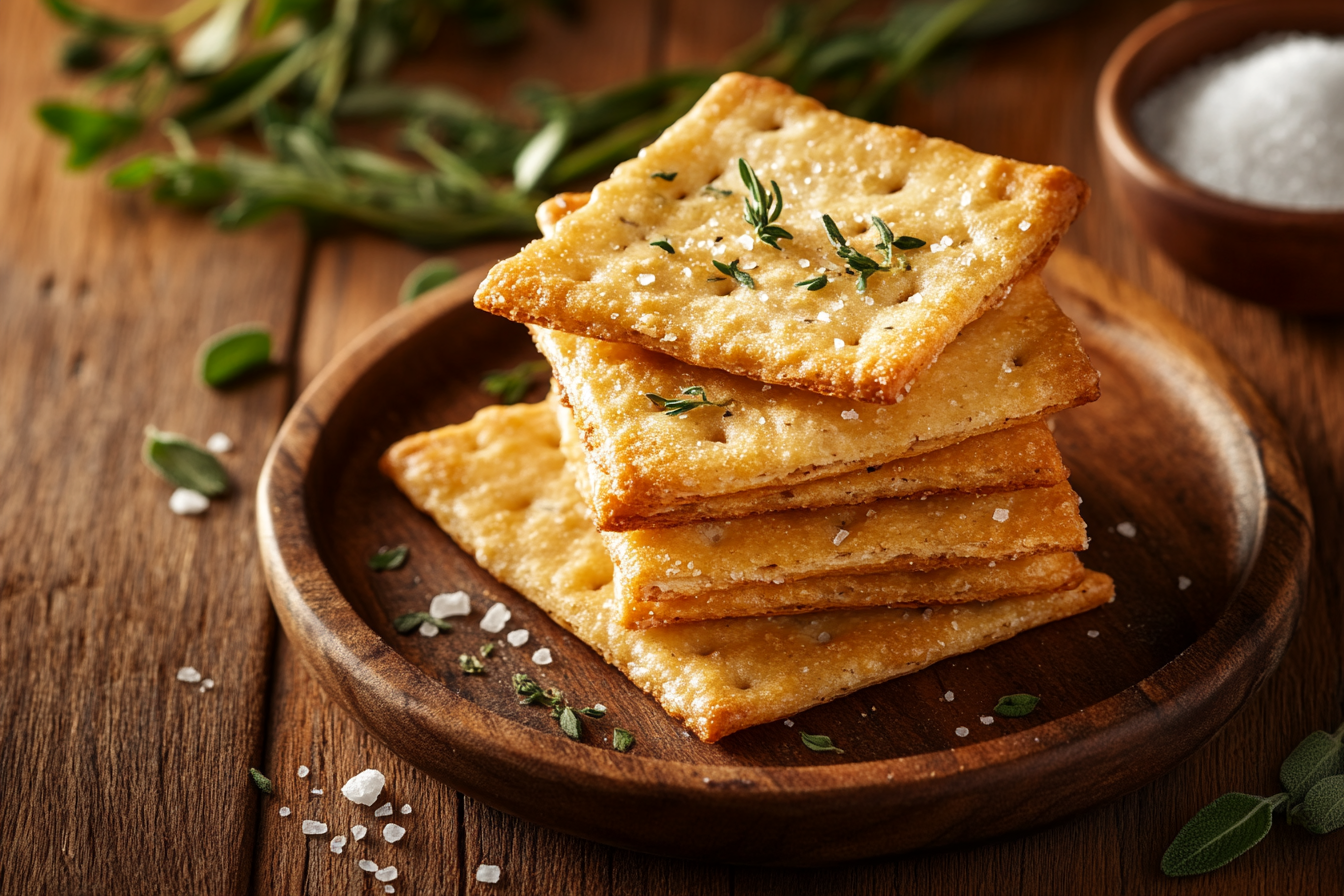Table of Contents
Introduction to Homemade Crackers
Why Make Crackers at Home?
Let’s face it—store-bought crackers are convenient but often come loaded with preservatives, artificial flavors, and too much salt. When you make your crackers, you control every ingredient. It’s surprisingly satisfying to whip up a batch of crispy crackers from scratch. Think of it as baking therapy!
Making crackers at home also lets you:
- Experiment with unique flavors (ever tried rosemary and parmesan?)
- Avoid allergens and cater to dietary restrictions
- Impress your friends with your kitchen skills
And let’s not forget, homemade crackers taste better! They’re fresher, crispier, and more flavorful than anything you can buy.
Store-Bought vs. Homemade: A Comparison
What sets homemade crackers apart from their store-bought cousins?
| Feature | Store-Bought | Homemade |
|---|---|---|
| Ingredients | Often artificial | 100% natural |
| Customization | Limited | Unlimited (you’re the boss!) |
| Freshness | Packed for months | Made fresh every time |
| Cost | Can be expensive | Budget-friendly |
So, why settle for less when you can have crackers that are not only healthier but also tailored to your taste buds?
Essential Ingredients for Homemade Crackers

Flour Options for Crackers
The base of any great cracker starts with the flour. All-purpose flour is a classic choice, but don’t stop there! Whole wheat, almond flour, or even gluten-free blends can work wonders. Each type of flour adds its own texture and flavor.
- All-purpose flour: Light and crisp
- Whole Wheat Flour: Nutty and wholesome
- Almond Flour: Great for gluten-free and keto diets
You can even mix and match flours to create a unique blend!
Seasonings and Flavor Enhancers
This is where the magic happens. Think beyond plain salt and pepper. Add herbs like thyme or rosemary, spices like paprika or cumin, or even a sprinkle of grated cheese. The sky’s the limit!
Here are some ideas to get your creative juices flowing:
- Savory: Garlic powder, smoked paprika, or dried oregano
- Cheesy: Parmesan, cheddar powder, or nutritional yeast
- Spicy: Crushed red pepper, cayenne, or black pepper
And don’t forget a touch of salt to bring all the flavors together.
Oils and Fats: What Works Best?
The type of fat you use will influence your crackers’ flavor and texture. Here’s a quick breakdown:
- Olive Oil: Adds a Mediterranean vibe and keeps crackers light
- Butter: Makes them rich and flaky
- Coconut Oil: Perfect for a subtle sweetness in your recipe
Step-by-Step Homemade Crackers Recipe
Preparing the Dough
- Combine Dry Ingredients: Whisk your flour, salt, and spices in a large bowl.
- Add the Fat: Slowly drizzle in your chosen oil or add small butter cubes. Mix until crumbly.
- Incorporate Liquid: Gradually add water, one tablespoon at a time, until the dough comes together. You want it soft but not sticky.
Rolling and Cutting the Crackers
Now that your dough is ready, it’s time to shape your crackers. This step is where precision meets creativity!
- Divide and Conquer: Split your dough into smaller portions to make handling easier.
- Roll It Out: Use a rolling pin to flatten the dough on a lightly floured surface or between two sheets of parchment paper. Aim for an even thickness—around 1/8 inch or thinner for extra crispiness.
- Shape the Crackers: Use a pastry, pizza wheel, or cookie cutter to create your desired shapes. Traditional squares or rectangles are quick and easy, but why not try stars or hearts for fun?
Baking to Perfection
The magic happens in the oven. Baking transforms your dough into golden, crispy crackers that make your kitchen smell heavenly.
- Prepare the Baking Sheet: Line it with parchment paper or a silicone baking mat to prevent sticking. Arrange your crackers in a single layer, leaving a little space between them.
- Poke Holes for Crispness: Use a fork to prick small holes in each cracker. This helps steam escape during baking and keeps the dough from puffing up.
- Bake: Preheat your oven to 375°F (190°C). Bake the crackers for 12–15 minutes or until golden and crisp. Keep a close eye on them to avoid burning!
- Cool Completely: Let the crackers cool on a wire rack. They’ll continue to crisp up as they cool.
Creative Flavor Variations to Try

Why stick to plain crackers when you can have so much more? These variations are sure to wow your taste buds.
Classic Salted Crackers
Sometimes, simple is best. Sprinkle flaky sea salt over your dough before baking for a timeless flavor. Perfect for pairing with cheese or dips.
Herb and Cheese Crackers
Mix shredded parmesan or cheddar into your dough and top with dried herbs like rosemary or thyme. The result? Savory crackers bursting with flavor.
Spicy Cracked Pepper Crackers
Add a kick by incorporating cracked black pepper and a pinch of cayenne into the dough. These are great for those who love a little heat!
Common Problems and How to Fix Them
Making crackers isn’t rocket science, but a few common pitfalls can trip you up. Here’s how to troubleshoot.
Crackers Too Soft or Soggy?
- Cause: Dough is too thick or not baked long enough.
- Fix: Roll the dough thinner and bake it a few minutes longer.
Dough Too Sticky or Dry?
- Cause: Incorrect liquid-to-flour ratio.
- Fix: If it is sticky, add a sprinkle of flour. If dry, knead in a few drops of water until smooth.
Uneven Baking and Burnt Edges
- Cause: Uneven rolling or overcrowding on the baking sheet.
- Fix: Roll the dough evenly and bake in batches if needed.
Health Benefits of Homemade Crackers
Making your crackers isn’t just fun and a great way to prioritize your health. Let’s dive into the benefits of these homemade delights.
Controlling Ingredients for a Healthier Snack
Store-bought crackers often contain hidden ingredients like trans fats, excessive sodium, and artificial additives. When you make your own, you’re in control:
- Lower Sodium: Use just enough salt to enhance flavor without overdoing it.
- No Preservatives: Your crackers are fresh and free from unnecessary chemicals.
- Healthy Fats: Choose olive oil or avocado oil for a heart-healthy twist.
It’s not just about avoiding the bad stuff it’s about packing in the good stuff, like whole grains and natural seasonings.
Customizing for Dietary Needs
Whether gluten-free, vegan, or keto, homemade crackers can be tailored to fit your lifestyle. Here’s how:
- Gluten-Free: Swap wheat flour for almond or chickpea flour.
- Vegan: Use plant-based oils and skip cheese-based variations.
- Keto-Friendly: Opt for almond or coconut flour and add flaxseeds for extra fiber.
Serving Ideas and Pairings
Homemade crackers are versatile snacks that shine independently or as part of a more extensive spread.
Perfect Dips and Spreads for Crackers
- Classic Hummus: Creamy and rich
- Guacamole: Adds a fresh, zesty kick
- Cheese Spreads: From blue cheese to brie
Using Crackers in Recipes
Crushed crackers can double as a breadcrumb substitute or a topping for casseroles. Try them in:
- Mac and cheese
- Baked chicken or fish
- Salads for added crunch
Tips for Storing Homemade Crackers
Best Containers for Crispness
To keep your crackers fresh and crunchy, store them in an airtight container. Mason jars, tin boxes, or resealable bags work well.
How Long Can You Store Homemade Crackers?
When stored properly, homemade crackers stay fresh for about a week. For more extended storage, consider freezing them in a sealed bag. Reheat in the oven for a few minutes to restore their crunch.
FAQs
Can I make crackers without a rolling pin?
Absolutely! If you don’t have a rolling pin, use a clean bottle or flatten the dough with your hands. The key is to get the dough as thin as possible for crispy crackers.
How do I make my crackers extra crispy?
Roll the dough thin (around 1/8 inch or less) and bake it until golden brown to achieve extra crispiness. Additionally, allow the cookies to cool completely before storing them to avoid trapping residual moisture.
Can I freeze the cracker dough?
Yes, you can freeze cracker dough for up to three months. Wrap it tightly in plastic wrap and store it in an airtight container. When you’re ready to bake, thaw it in the refrigerator, roll it out, and bake as usual.
How can I make gluten-free crackers?
To make gluten-free crackers, substitute wheat flour with almond, chickpea, or a gluten-free blend. Ensure the dough holds together well; gluten-free flours may require slightly more liquid or a binder like flaxseed.
What’s the best way to store homemade crackers?
Store your crackers in an airtight container at room temperature for up to a week. For more extended storage, freeze them in a sealed bag and reheat them in the oven to restore their crispiness.
Conclusion
Homemade crackers are a versatile addition to any table, whether serving them with a savory dip or a hearty dish like this baked Italian sausage recipe. For those interested in incorporating unique ingredients, the sourdough quick bread guide offers inspiration on using sourdough starter in your cracker dough. Pair your crackers with plant-based spreads from our plant-based recipes for beginners for a healthy snack, or round off your meal with a sweet treat like this healthy cheesecake recipe for dessert.

